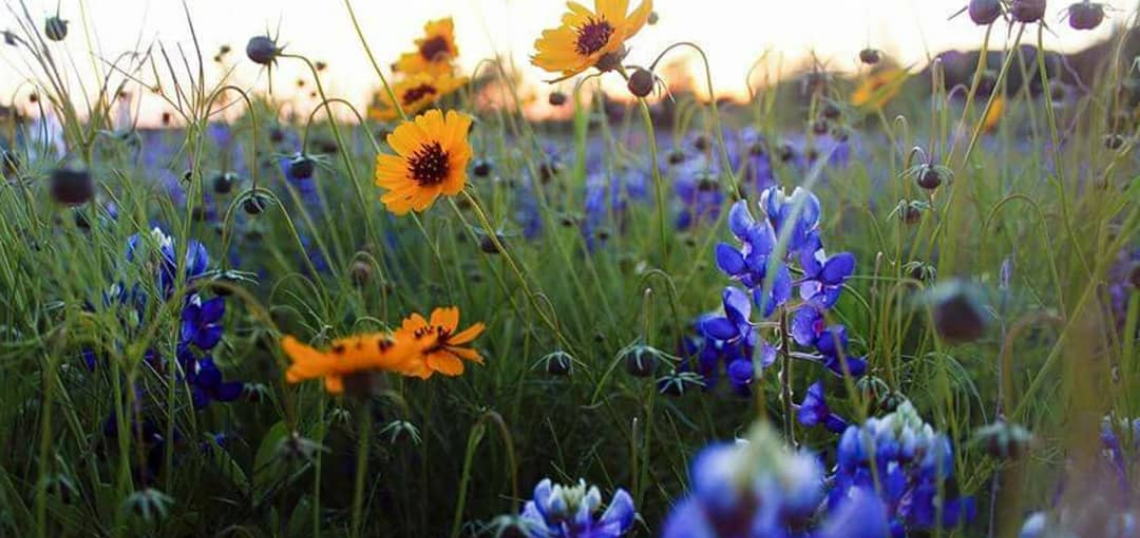Here are 16 facts and tips absolutely essential to any Hill Country wildflower lover!
Q: How do you evacuate a crowded room in Texas at light-speed precision?
A: Shout, “I see bluebonnets!”
We Texans are (to put it mildly) absolutely obsessed with our state flower.
When Springtime hits, and acres of Hill Country land burst into vibrant shades of blue, red, and purple, Texans respond with a near-unexplainable frenzy, celebrating the timeless local tradition of screeching-the-car-to-a-halt-and-posing-the-entire-family-in-a-field.
And whether you’re looking for a bluebonnet cheatsheet or just wanting to brush up on your wildflower knowledge, here are 12 facts and tips absolutely essential to any Hill Country wildflower lover!
Image Courtesy of Instagram User @mpaguephotography
1. Despite last year's lackluster bluebonnet season, this year promises to be much better! Thanks to plenty of rainfall this year, the Hill Country is primed and ready for everyone's favorite flower in 2019.
2. Bluebonnets were named the official state flower in 1901.
3. Despite their popularity, bluebonnets are relatively elusive little creatures, and their whereabouts are almost always a surprise, even to expert bluebonnet chasers.
4. Wildflowers are among the first vegetation to reappear at roadside cuts and fills.
Image Courtesy of Instagram User @poepomsky
5. Texas wildflowers bloom year-round, but the most popular times include March-June. Bluebonnet season usually peaks between the last week in March through the end of April (depending on location).
6. The Texas Department of Transportation has a “Wildflower Hotline” that keeps track of the best bloomin’ spots! (800-452-9292)
7. Texas wildflower season attracts visitors and tourists from all over the world.
8. While the bluebonnet is the official Texas flower (and probably the most popular wildflower in the state), there are over 5,000 species of wildflowers in the state of Texas, including everything from Indian Paintbrushes to Horsemint.
Image Courtesy of Instagram User @lcoscarson
9. Picking bluebonnets is NOT actually illegal (contrary to popular belief), but it is discouraged. If too many wildflowers are trampled, they probably won’t grow in that spot again.
10. Bluebonnets generally bloom earlier in the Southern part of the state.
11. TxDOT buys and sows about 30,000 pounds of wildflower seed each year.
12. All bluebonnets aren’t blue! Several species of the bluebonnet exist, including white and pink varieties.
Image Courtesy of Instagram User @kaitlinvphotography
13. W. A. Slaughter is considered Texas’ leading bluebonnet painter.
14. Burnet was officially named the “Bluebonnet Capital of Texas” by Texas legislature.
15. During bluebonnet season, the highway department stops mowing the grass (and many people don’t mow their lawns!).
16. Popular bluebonnet photographer (and resident expert) Jason Weingart has compiled a comprehensive list of bluebonnet viewing locations! They include: Hwy 130 (near Georgetown), Wildseed Farms (Fredericksburg), Lady Bird Johnson Wildflower Center (Austin), Highway 16 (Fredericksburg to Llano), FM 609 (La Grange), Turkey Bend Recreation Area (Marble Falls), Ennis, and Hwy 290 (Washington County).
If you’ve spotted any good spots of your own, feel free to let us know in the comments section!
Happy wildflower season, y’all.
Though the Hill Country has always been known as a Texas retiree’s paradise, the population is increasingly diverse, meaning more and more different types of buyers are finding solace in this rolling landscape! To discover where you fit, from farm and ranch to luxury, contact one of our licensed agents! Plus, download our exclusive Buyer’s Guide to discover tips written specifically for the Hill Country buyer.
Note: This blog was originally published in March 2018 and has been updated to reflect current info.





 Back
Back





